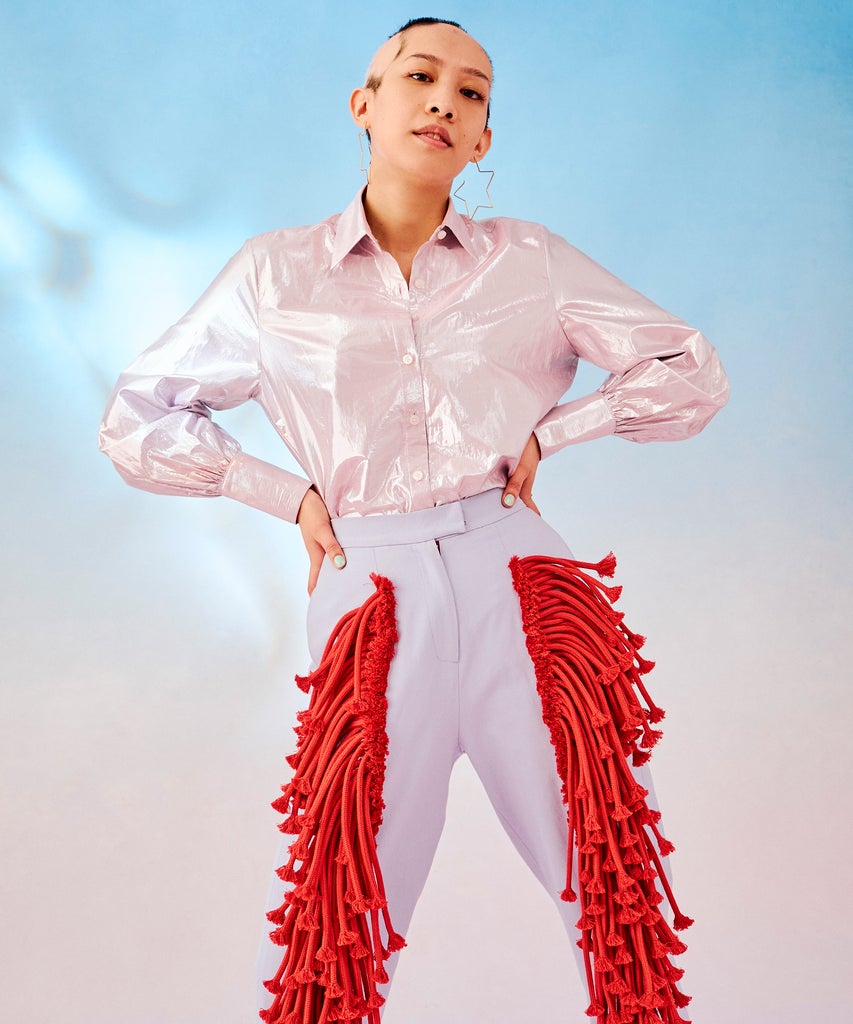
In fashion, there has been no faster-growing sector than resale. Online platforms like The RealReal, Depop, and Rebag have surged in popularity as customers seek to make purchases secondhand — both for price and environmental reasons. But, it’s not just about major platforms anymore. Increasingly, brands ranging from COS to Lululemon and Cuyana are launching their own resale programs, housed on their websites, to offer customers a chance to pick up pre-loved items at the same time that they’re seeking out something new.
Recurate, which was founded in 2020, works with brands to integrate in-house secondhand platforms. According to Karin Dillie, VP of partnerships for the company, fashion labels — aware of the larger resale ecosystem that has even gotten luxury brands to participate — want to be able to have a more direct connection to their customers: “They keep seeing more third-party marketplaces pop up, and they’re like, ‘How do we make sure that is a very branded experience? How do we keep them in the ecosystem and make them feel like they’re really part of our brand?’”
Vanessa Barboni Hallik, founder and CEO of sustainable apparel brand Another Tomorrow, compares brand resale programs to authorized car dealerships: “[In focus groups] the example that would come up over and over again was BMW pre-owned certified cars. Wherein, the same place you could buy a brand-new car or a used car but you have that authenticity and service of the brand regardless of what point you’re coming in at.” She explains that the brand’s ability to authenticate and assess the quality of its own product helps to establish customer trust and encourages them to participate and close the loop when they may have never before.
According to Dillie, the biggest reason brands come to Recurate to launch their own resale platforms though has to do with sustainability: “They are putting a stand behind their product, that it doesn’t just last through one person, it can last through multiple lives.”
Sustainability
“I believe that the popularity of brands launching resale is due to the rising, industry-wide recognition that sustainability spans far beyond how a product is made,” echoes Shilpa Shah, co-founder and Chief Experience Officer of Cuyana that, in April, launched its Revive resale platform. “This means investing in high-quality, responsibly made materials that extend the product lifecycle and platforms that ensure each piece has a home, whether it is through repairs or a second-life program.”
But, to Dillie, resale shouldn’t be about simply moving consumption from new to pre-loved products, but about producing less overall.
Reducing Overproduction
One large issue within the fashion industry that contributes to excess waste, is the difficulty in predicting demand. Oftentimes, brands will overproduce products, not wanting to risk the potential of underproducing and not being able to reach selling potential. “As a brand that creates limited production runs, [Mara Hoffman’s resale platform] Full Circle gives us the opportunity to meet the demand from customers looking for past favorites that are no longer sold on our site, whilst also providing a more inclusive price point,” says leading sustainable fashion designer Mara Hoffman, who first introduced resale with third-party vendors in 2017 before launching the brand’s own in-house program in 2021.
“If you underproduce, you can actually supplement that [demand] with resale,” says Dillie. “You don’t have to overproduce.” She adds that this process can actually have an economic benefit for the brands participating as they are able to maintain close-to-full prices, and not have to majorly discount items due to excess stock at the end of the season.
“The overall profitability of this program is really quite strong,” confirms Barboni Hallik. “It serves as a nice complement and counterpart to producing new products.”
Access To Sold-Out Items
Another benefit that brands have found in launching their resale platforms has been the influx of data now available to them. Having access to information on what products are performing well through their resale services may not only drive customer participation but, over time, can also lead to helpful insights that can impact future production choices.
“We have noticed some instances of specific retired styles and colors selling quickly,” explains Shah. “We will have to keep learning over time in order to be able to pull out dependable trends that could influence our own product development. So far, having some very in-demand retired items that are only available on Revive in our secondhand market is part of what makes this platform special!”
Ownership Of Brand Identity & Price
When customers are reselling items in partnership with multi-brand platforms, there can be a lack of transparency around pricing, something that brands aim to address both to better satisfy their customer base but to also help establish a baseline value of their own products.
“I’ve had things I was about to consign, and I’d ask, ‘Where do you think this is going to sell [price-wise]” and I’d be like, ‘Whoa, whoa, whoa, never mind.’ I would rather hold on to it if it’s going to be a fire sale,” says Barboni Hallik. “Giving the seller that transparency, so they know what they’re agreeing to upfront is super important. And it’s important for the brand, too, because you don’t want your items out on fire sale either.”
This has been a pain point for luxury brands, many of which have been slow to enter the space for fear of devaluing their products and, according to Dillie, the difficult logistics around authenticating which technology is just catching up to. Dillie nods to Another Tomorrow’s creation of digital IDs, a unique identifier that offers information on how the piece was made via QR code, as a way she sees more luxury brands entering the space. “Resale becomes much less reliant on the nuances of the stitching inside the third pocket and more about what is the serial number and how does that match the digital ID,” she says. “It gives brands a lot more control over the product they’re producing and tracking where that product goes.”
So, as players at every range of price points continue to enter the market, does motivation matter? “Over the past seven years, there has been a huge shift with brands wanting to participate in more sustainable practices,” Hoffman notes. “This is exciting, however, the interest in sustainability varies, one being circularity but another being new revenue streams.” Dillie agrees that monetization is one of the other top reasons behind brands launching resale programs: ”How can we keep the value we generated by creating a long-lasting product within our brands?” she says of the mindset.
That said, if, as Dillie suggests, resale is able to not just shift consumption but actually reduce production overall, it does seem possible that brands and consumers can equally benefit from the movement: “Resale is one of your tools to make more money off of producing less items.”
Like what you see? How about some more R29 goodness, right here?
Powered by WPeMatico






